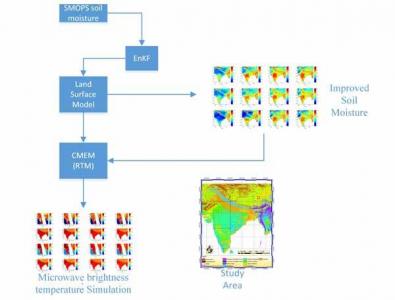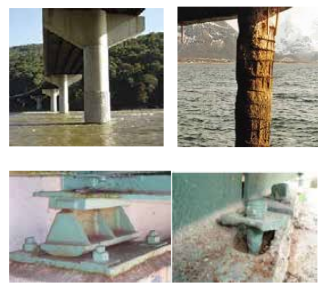

Civil infrastructure systems such as highway bridges play an essential role in the sustained economic growth and social development of any country. During their service life, highway bridges are continuously exposed to multiple chemical and physical stressors such as corrosion deterioration along with intermittent seismic threats. These deterioration effects, if not effectively monitored and managed, can cause significant reduction in structural functionality and safety especially during extreme event such as earthquakes. This research provide an enhanced understanding of the impact of realistic and commonly occurring critical deterioration mechanisms typically ignored in the past such as pitting corrosion of embedded rebars in bridge columns and deterioration of anchor bolts due to necking at interface in bridge bearings within the seismic vulnerability assessment framework for highway bridges (Fig. 1). Seismic fragility curves which gives conditional probabilistic statement of damage state exceedance given the intensity of the ground motion are developed for commonly occurring exposure condition and the results highlights the need to consider realistic deterioration within the seismic vulnerability and seismic life-cycle assessment framework (Fig. 2).
Our other research focus is on developingframeworkfor seismic vulnerability assessment of highway bridges in India. The Indian subcontinent lists among the high earthquake prone regions in the world and has witnessed significant earthquakes n the recent past. geographical statistics of India show that more than 60% area in the country is considered to be prone to damaging earthquake
vast majority of existing bridges in India are vulnerable to earthquakes as they were not designed according to any seismic design criteria or were designed as per antiquated codes which does not meet the seismic detailing requirements imposed by current guidelines. Also, seismic zonation map of India has been revised recently, which prescribe now higher horizontal ground acceleration as compared to previous version. This underlines the need to assess the seismic vulnerability of existing highway bridges in India across multiple design eras which will be useful for decision making and retrofit prioritisation in both pre and post-earthquake disaster management.
